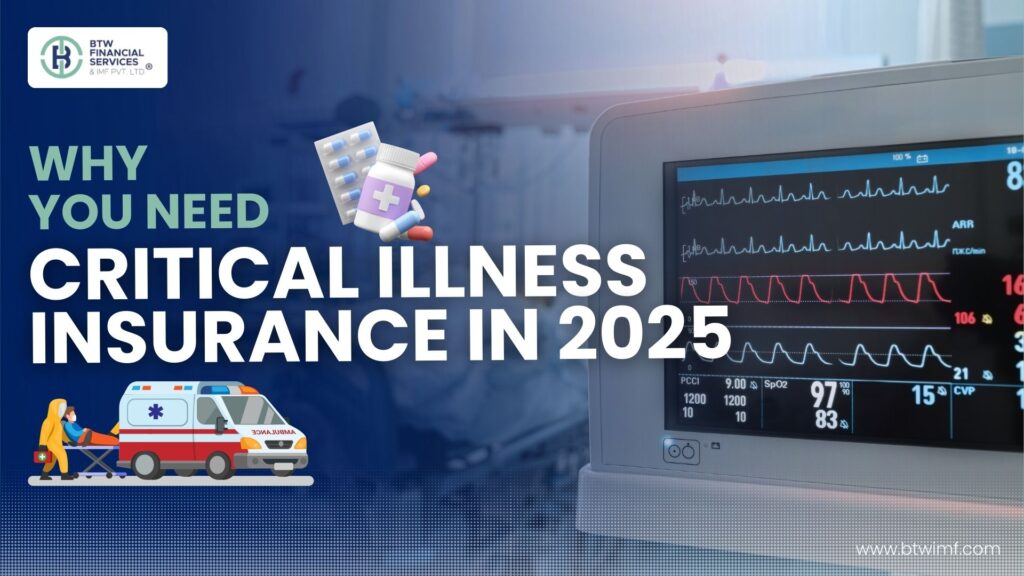Why You Need Critical Illness Insurance in 2025
Summary:
Key Need: Financial protection against the rising costs and increased prevalence of critical illnesses in 2025.
- Main Reasons:
- Rising healthcare costs and medical advancements
- Gaps in primary health insurance coverage
- Increasing prevalence of critical illnesses
- Importance of maintaining financial stability and peace of mind
- Changing work environment and potential reduction in employer-provided benefits
- Solution: Critical Illness Insurance provides a lump-sum payout upon diagnosis, covering medical expenses, living costs, and more.
- Actionable Steps:
- Assess personal needs and existing coverage.
- Research and compare insurance policies.
- Seek professional advice for tailored protection.
- Regularly review and update your policy as circumstances change.
Table of Contents
- Introduction
- Key Reasons for Needing Critical Illness Insurance in 2025
- 2.1 Rising Healthcare Costs
- 2.2 Increasing Prevalence of Critical Illnesses
- 2.3 Gaps in Primary Health Insurance
- 2.4 Financial Stability and Peace of Mind
- Additional Recommendations for Readers in 2025
- How to Choose the Right Critical Illness Insurance Policy in 2025
- Conclusion
- Frequently Asked Questions (FAQs) about Critical Illness Insurance
1. Introduction
Critical Illness Insurance is a type of insurance policy that provides a lump-sum payment if you are diagnosed with a critical illness or condition that is specified in your policy. These conditions can include but are not limited to cancer, heart attacks, strokes, and organ transplants.
The primary purpose of this insurance is to help alleviate the financial burden that often accompanies such diagnoses, allowing you to focus on recovery.
Relevance in 2025:
As we move into 2025, several factors underscore the importance of considering Critical Illness Insurance as part of your financial planning strategy. These include anticipated increases in healthcare costs, a projected rise in the incidence of critical illnesses, potential gaps in primary health insurance coverage, and shifts in the work environment that may impact employer-provided benefits.
2. Key Reasons for Needing Critical Illness Insurance in 2025
2.1 Rising Healthcare Costs
- Explanation: Healthcare costs have consistently outpaced inflation, and this trend is expected to continue into 2025. Treatments for critical illnesses are particularly expensive, with costs including hospital stays, surgeries, medications, and sometimes experimental treatments not fully covered by primary insurance.
- 2025 Context:
- Inflationary Pressures: Economic forecasts suggest continued inflation, which will drive up healthcare costs.
- Technological Advancements: While beneficial, new medical technologies and treatments are often pricey, adding to overall healthcare expenditures.
- Example Scenario: A patient diagnosed with cancer might face medical bills exceeding $100,000 in the first year alone, not accounting for lost income. Cancer insurance plans can help cover these expenses, offering financial protection to manage the overwhelming costs of treatment and recovery.
2.2 Increasing Prevalence of Critical Illnesses
- Statistics: Studies and health forecasts for 2025 indicate a potential rise in diagnoses of critical illnesses, partly due to:
- Aging Population: As populations age, the incidence of age-related critical illnesses increases.
- Lifestyle Factors: Sedentary lifestyles and poor dietary habits contribute to higher rates of heart disease and certain cancers.
- Environmental Changes: Exposure to pollutants and climate change may increase the risk of certain health conditions.
- Personal Risk: While statistics provide insight, the onset of a critical illness can be unpredictable. Even with a healthy lifestyle, genetic predispositions or unforeseen accidents can lead to critical illnesses.
2.3 Gaps in Primary Health Insurance
- Limitations of Traditional Insurance:
- Deductibles and Copays: Out-of-pocket expenses can quickly add up.
- Coverage Limits: Some treatments or medications might exceed policy limits or be excluded.
- Living Expenses: Primary insurance rarely covers living expenses during extended recovery periods.
- Financial Protection of Critical Illness Insurance: Provides a safety net to cover these gaps, ensuring you can afford the best possible care and maintain your standard of living.
2.4 Financial Stability and Peace of Mind
- Impact on Finances:
- Debt Accumulation: Medical bills can lead to significant debt.
- Lost Income: Time off work for recovery can drastically reduce household income.
- Emotional Well-being: Knowing you have a financial cushion in place can greatly reduce stress, allowing you to focus on your health.
3. Additional Recommendations for Readers in 2025
- Consult a Financial Advisor: To tailor your insurance needs to your individual circumstances, including assessing your current financial situation, health status, and future goals.
- Regularly Review and Update Insurance Policies: As your life circumstances change (e.g., marriage, children, career changes), so too should your insurance coverage to ensure it remains relevant and adequate.
- Combine with Other Protective Measures: Consider how Critical Illness Insurance fits into a broader strategy that might include health, life, and disability insurance for comprehensive financial security.
4. How to Choose the Right Critical Illness Insurance Policy in 2025
- Assess Your Needs:
- Consider your health status, family medical history, financial situation, and existing insurance coverage.
- Research Providers:
- Compare policies from various insurers, looking at covered conditions, payout amounts, premium costs, and policy exclusions.
- Seek Professional Advice:
- Consult with a financial advisor to ensure the chosen policy aligns with your overall financial strategy.
- Regularly Review Your Policy:
- As your circumstances change, so might your insurance needs. Regular reviews can help ensure you remain adequately protected.
5. Conclusion
In conclusion, considering the rising healthcare costs, increasing prevalence of critical illnesses, gaps in primary health insurance, the importance of maintaining financial stability and peace of mind, the cost of advancements in medical treatments, and the changing work environment, incorporating Critical Illness Insurance into your 2025 financial strategy is prudent. It serves as a vital safety net, ensuring that in the face of a critical illness, your primary focus can remain on recovery, not financial survival.
Frequently Asked Questions (FAQs) about Critical Illness Insurance
Q: What is typically covered under a Critical Illness Insurance policy?
Common conditions include cancer, heart attacks, strokes, organ transplants, and in some policies, less common conditions like MS or Parkinson’s disease.
Q: Can I get Critical Illness Insurance if I have a pre-existing condition?
It may be more challenging and expensive. Some insurers offer policies with exclusions related to your pre-existing condition, while others might decline coverage.
Q: How does the payout work?
Upon diagnosis of a covered condition, you receive a lump-sum payment, which you can use as needed (towards medical bills, living expenses, etc.).
Q: Is Critical Illness Insurance tax-deductible?
This varies by jurisdiction. In many places, premiums are not deductible, but the payouts are tax-free.




